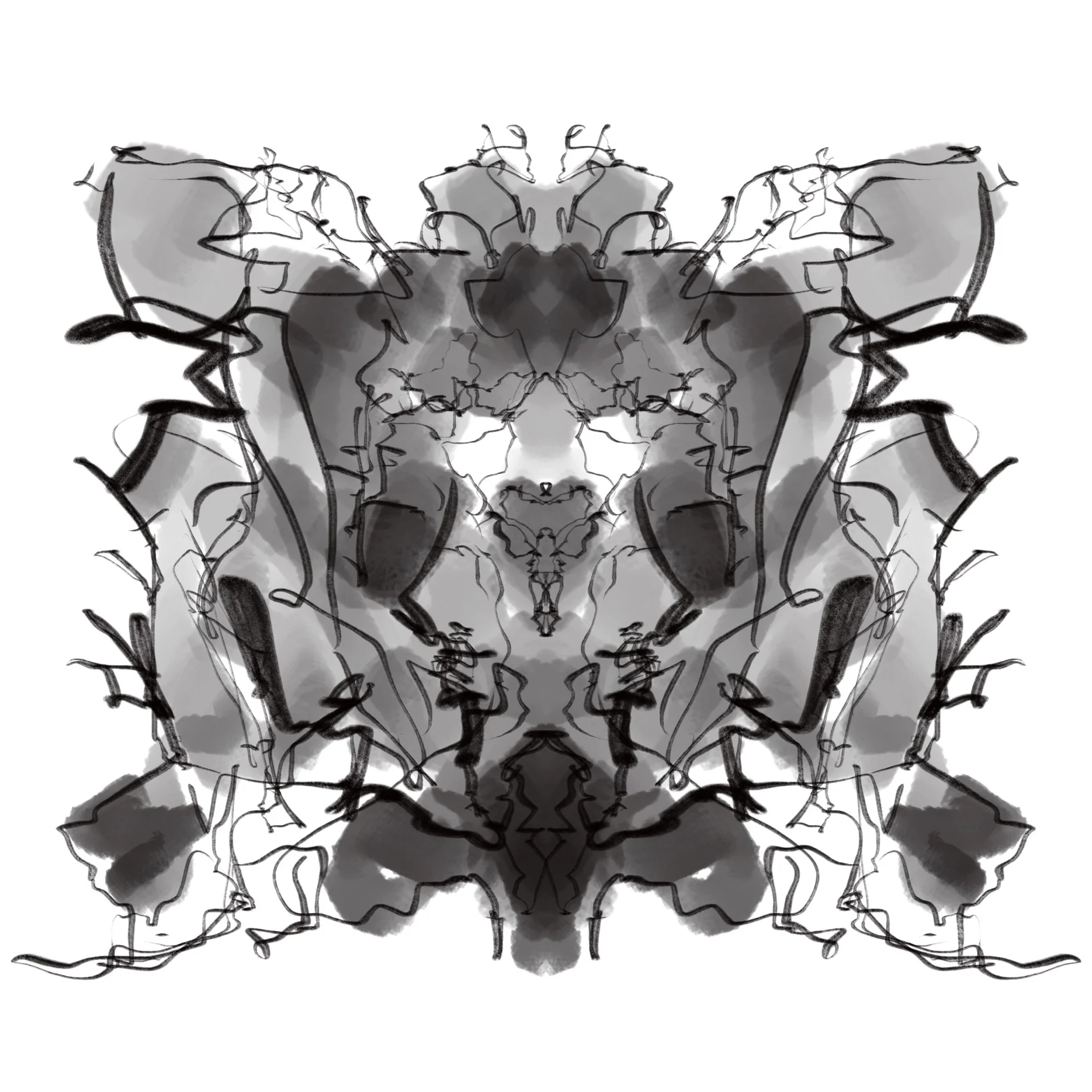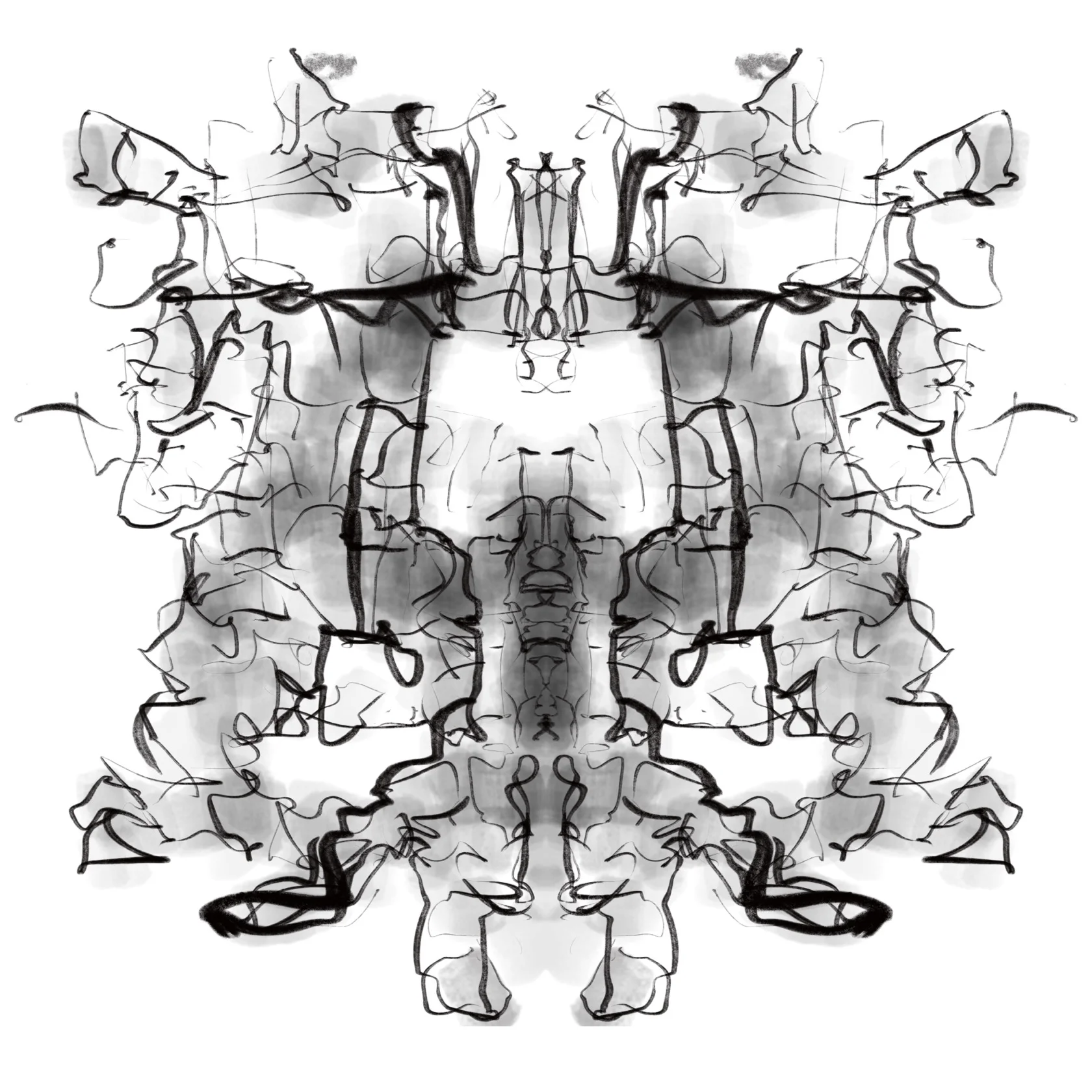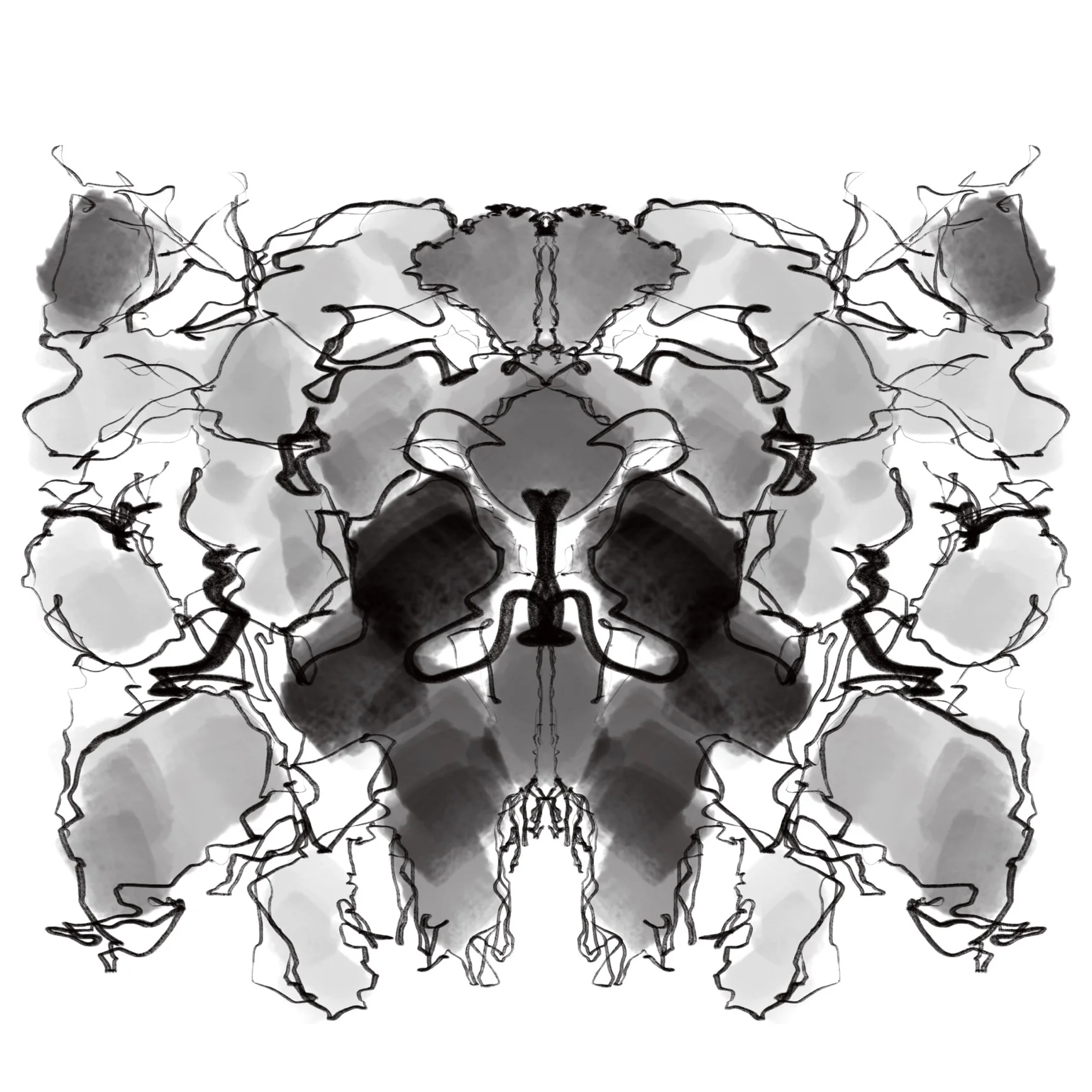Bi-lats explore the ability of bilateral symmetry to produce order, legibility, and familiarity from seemingly arbitrary source material. Inspired by Hermann Rorschach’s famous inkblot drawings, first created in 1921 and still used by psychologists today, Bi-lats encourage multiple simultaneous readings and associations--making something out of nothing. Drawings follow the Surrealist practice of "Automatic Drawing," (also popularized in the 1920s) wherein the hand moves without a predetermined path or objective, relying on chance, accident, and the subconscious to discover emergent compositions and ordering systems. In contrast to Rorschach's klecksographic drawing process, which required the inkblot to be finalized on paper before mirroring it through folding, Bi-lats use drawing software to create a real-time feedback loop of drawing and reflection.
Developing this multiplicity three-dimensionally removes a degree of ambiguity, but allows for another--a single object may appear to transform and yield multiple readings, by maintaining a consistent axis of symmetry.










